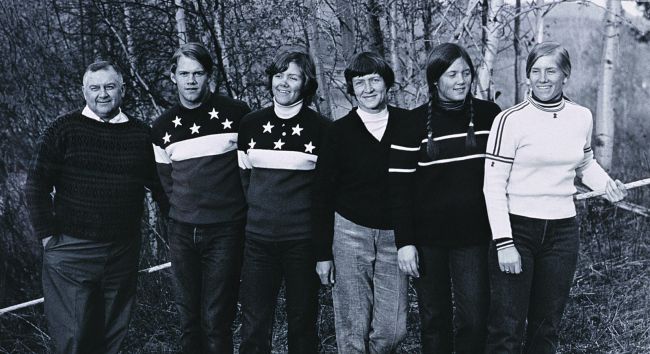Throwback post to the winter 1996 Vermont Quarterly. The issue included a feature on evidence that mountain lions were returning to Vermont and the following related piece about the catamount’s reign in Burlington as UVM’s mascot.
Catamounts in Natural Fibers and Polyester
February 6, 1926, the Vermont Cynic asked undergraduates whether they wanted a mascot and offered up a ballot—lynx, wildcat, other, or shelve the idea. Response was limited.
Try, try again. At a vote, exclusively for male students, held later in the year the question came up once more. This time the ballot suggested “tomcat, camel, cow, or catamount.” By a vote of 138-126 the catamount prevailed. (We’re not sure of the runner-up, but it’s fun to consider the camel.)
Thus began the catamount’s run as UVM mascot, which celebrates its 70th anniversary this year. Generations of UVM students have known the various incarnations of Charlie and Kitty Catamount as they’ve cavorted the bleachers of Patrick or Gutterson. A UVM student climbed into Charlie Catamount’s fake fur for the first time in the fifties; when Kitty joined him in the seventies, the couple was married at a UVM hockey game.
Only those on campus in the late sixties will remember one of the more interesting chapters in catamount history, the era of Charles I, aka “Rink,” UVM’s lone live catamount mascot. 
Rink was the brainchild of Nancy and Robert “Tiny” Leggett, a South Burlington couple who were avid UVM hockey fans in the 1960s. After floating the idea with a few players and coaches, the Leggetts went to great lengths to obtain a puma cub born in captivity at a Peoria, Illinois, zoo. Cat in hand, they faced more obstacles in the process of getting Rink approved by state and university officials.
In fall of 1968, the UVM Student Association and Athletic Council both gave Rink the official distinction as UVM’s mascot. The students formed a Catamount Committee that established a fund to help the Leggetts keep up with Rink’s quickly growing appetite and upkeep. Rink buttons and photographers were sold; Alpha Chi sisters ironed shirts for fifteen cents each to raise money for Rink.
Rink and the Leggetts quickly became family, and local celebrities in the process. The young puma summered with the Leggetts on their houseboat moored off of Burton Island State Park, developed a taste for corn on the cob, and got accustomed to travel in a specially fitted VW bus. In a piece titled “Labor Pains While Giving Birth to a College Mascot,” Tiny Leggett wrote: “As long as we called him a puma or a catamount, everything was fine. But refer to him as a mountain lion or cougar, and many of his ‘fans’ would head for the hills.” Rink became comfortable around crowds through visits to the college snack bar and a local pizza pub, where “he enjoyed his roast beef subs.” He took in football practices, enjoying the chance to wrestle with the tackling dummies, and became an attraction at UVM contests home and away. Leggett wrote that Rink, who was caged at UVM athletic events, would offer a growl of his own when the fans yelled.
Popular as he was, Rink’s tenure as UVM mascot was brief. Growing from ten to 150 pounds in the nineteen months that the Leggetts cared for him, the cat had become too much of a burden. The Burlington Free Press of January 3, 1969, reported that the couple planned to donate Rink to Canada’s Granby Zoo, leaving the mascot duties to those funny looking, two-legged catamounts.
– Thomas Weaver










